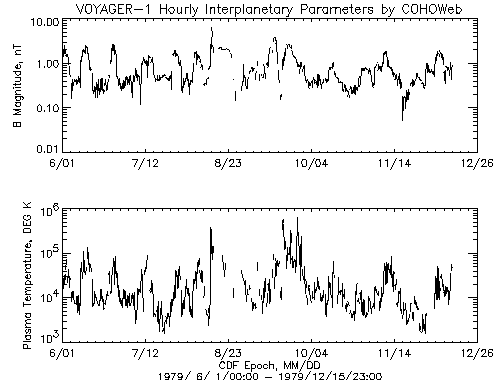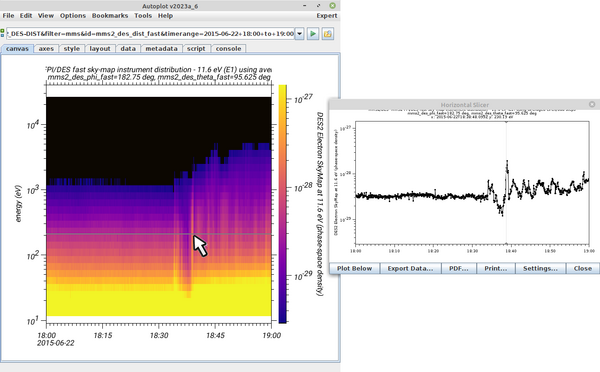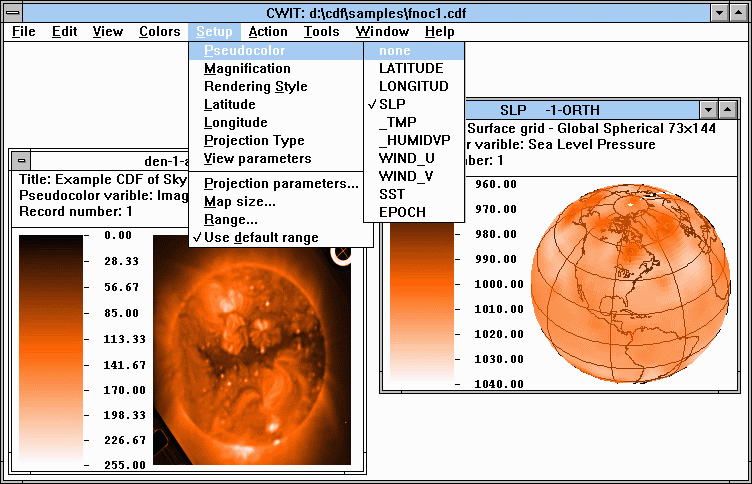Main CDF Applications
Many applications have been created in support of the SPDF’s Common Data Format (CDF) data standard. CDFs are used in a wide variety of research areas, so a few example applications specific to the non-solar heliophysics data community are shown below.
SPDF:
CDAWeb is a web-based data visualization and retrieval system developed by SPDF. It was designed to process ISTP-compliant CDF files and generates IDL-based plots and graphics. Users only need a web browser to access CDAWeb.
If users would like to add any datasets to the SPDF archive and CDAWeb data browsing system, please see the data delivery requirements and contact SPDF Support.

CDAWlib is the underlying plotting library that powers CDAWeb. It is an IDL-based package of CDF plotting functions and routines that can either be compiled from source code or downloaded as a pre-compiled saveset. This requires a local installation of IDL.
CDFx is a software tool in the CDAWlib library that not only reads, edits, and displays the contents of a CDF file but can also be used for plotting. It too requires the local installation of IDL. However, CDFx is standalone and does not need any of the other tools in the CDAWlib library to be compiled.
CDAS is a RESTful web service that interfaces with the CDAWeb data browsing system. SPDF has developed an API in both Python (cdasws) and IDL® (spdfcdas). However, CDAS access only requires the ability to send and receive HTTP requests, so other mechanisms for access may exist across the various programming languages.
OMNIWeb Plus is another web-based data visualization and retrieval system developed by SPDF for distinct subsets of heliospheric datasets. These subsets inculde: spacecraft-interspersed, near-Earth solar wind and geomagnetic indices (OMNI); near-Earth [up to 1 AU] spacecraft-specific; deep space ephemeris, energetic particle, and solar wind (COHOWeb); and multi-source solar wind and particle. Most OMNIWeb Plus datasets can also be found in CDAWeb.

Outside Contributors:
Autoplot is a Java-based application developed to quickly plot and browse various data file formats, including CDFs. It attempts to create a sensible plot from any given URL or local file within minutes. Autoplot also contains the functionality to integrate with data servers such as CDAWeb.

SPEDAS is an open-source data analysis platform specifically developed for the ingestion, analysis, and visualization of space physics data. It is an IDL-based application but has modes that can run with or without an IDL license. SPEDAS also offers the interoperability to integrate with CDAWeb and Autoplot.
PySPEDAS is the Python-based implementation of SPEDAS. It is also open source and maintains the mass majority of SPEDAS functionality, albiet in a more Pythonic way. As evident in its naming, PySPEDAS requires the installation of Python.
AMDA is a web-based analysis tool that aims to ease the process of combining space physics datasets from various origins and sources. This includes local files, model & simulation results, online databases, and data servers such as CDAWeb. AMDA is also accessible via Speasy, an open-source Python client with full support of the AMDA API.
TOPCAT is a Java-based graphical viewer and editor for tabular data. It was developed for the astronomical community but can also process non-astronomical data formats, including CDFs. TOPCAT is particularly good at the interactive exploration of large datasets.
QSAS: This Science Analysis Software for Space Plasmas (QSAS) is a software package, provided by the United Kingdom Cluster Science Centre (Imperial College London), which provides a flexible, extendable environment for the selection, manipulation, and display of space physics data. QSAS is written in C/C++ and is compiled using the gnu compiler set, and makes use of several elements of third-party software, including Qt, CDF, and PLplot. Currently available for Linux, Mac OS X and Windows.
CWIT is a graphical visualization tool developed to display images from 2-D datasets in CDF format onto various map projections of the Earth.





